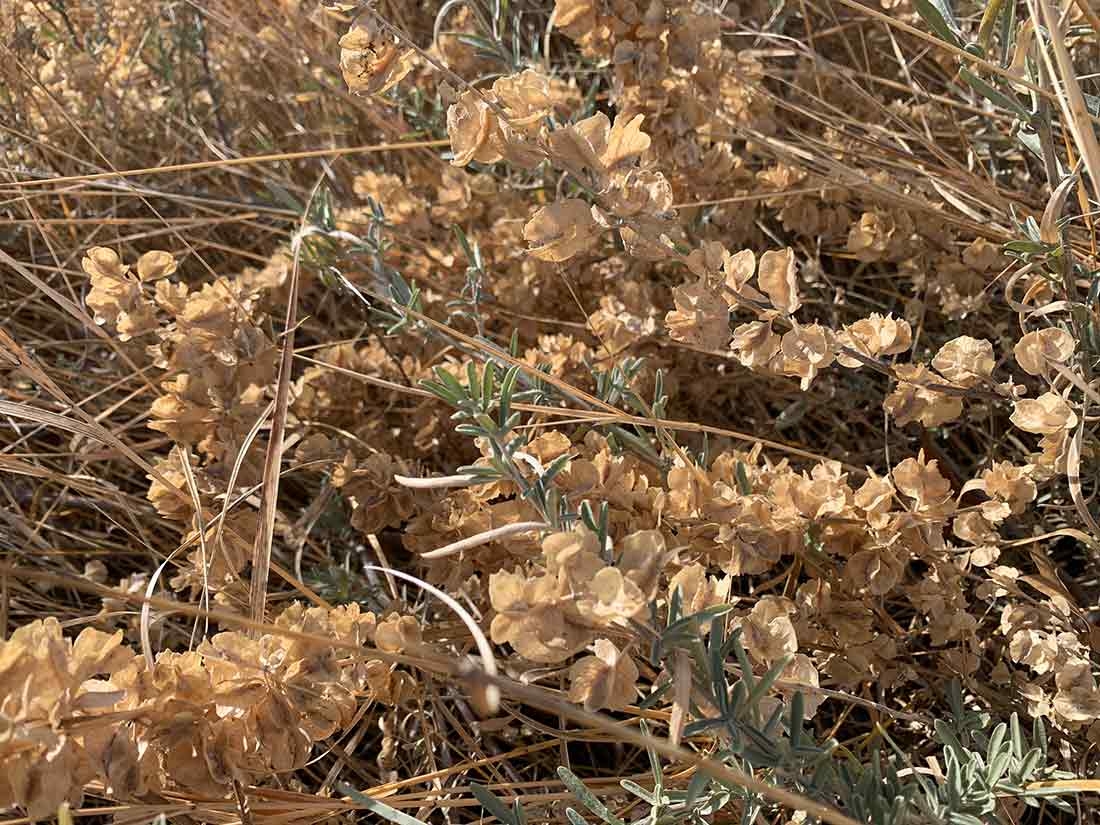December Walking Tour – The Subtle Winter Offerings of Shrubs
The ever-present nature of shrubs plays an important role in creating habitat for wildlife. Their multiple persistent trunks allow them to maintain a year-round presence, even when other plants have senesced, creating a structure and stature in the landscape and shelter utilized by a huge variety of creatures. Conveniently for hungry animals, because of these persistent states, shrubs are also unmatched at holding onto fruit and seeds well into the winter months.
As my colleague Michael Guidi highlighted in his 2023 October Walking Tour “Ornamental Fruit: Berries, Drupes and Pommes,” colorful fruiting shrubs are excellent aesthetic additions to the winter garden, in addition to their extensive benefits for wildlife. But there are also less conspicuous fruits and seeds to be found throughout the world of winter shrubs with just as important an ecological role to fill.
Although the plants listed below can all be found in the Laura Smith Porter Plains Garden, this isn’t so much a tour along a specific route but a call to notice. Wander the gardens with your mind open to flashes of fluff and texture held above tawny and darkened winter stems.
- Amorpha fruticosa (false indigo bush)
While the dark maroon flowers of false indigo bush stun throughout the summer, the abundant latte colored seedheads offer important forage for songbirds throughout winter. - Atriplex canescens (fourwing saltbush)
The fourwing saltbush is dioecious, meaning that different individuals have different sexes. You’ll need a female plant to produce the seeds that are enjoyed by a large variety of wildlife, but fret not if your bush isn’t producing seeds. Studies have shown that these shrubs have fluid biologies that allow them to switch between sexes as needed. - Ericameria nauseosa (rubber rabbitbrush)
Rubber rabbitbrush is one of the most common and important shrubs of the Front Range. Following their late-autumn ochre blooms, they set thousands of seeds, which they hold atop their waxy stems. - Krascheninnikovia lanata (winterfat)
The seeds of winterfat are so named because of their high levels of protein and ability to sustain small and large mammals throughout the winter months. Their dense seedheads resemble furry candles.
If you’re interested in incorporating shrubs into your garden and exploring inspirational shrublands throughout the world, be sure to check out the book that Michael Guidi and I wrote, “Shrouded in Light: Naturalistic Planting Inspired by Wild Shrublands.” Available in the Shop at the Gardens and at a number of online retailers.
Gallery photos by Kevin Philip Williams
Gallery





Add new comment